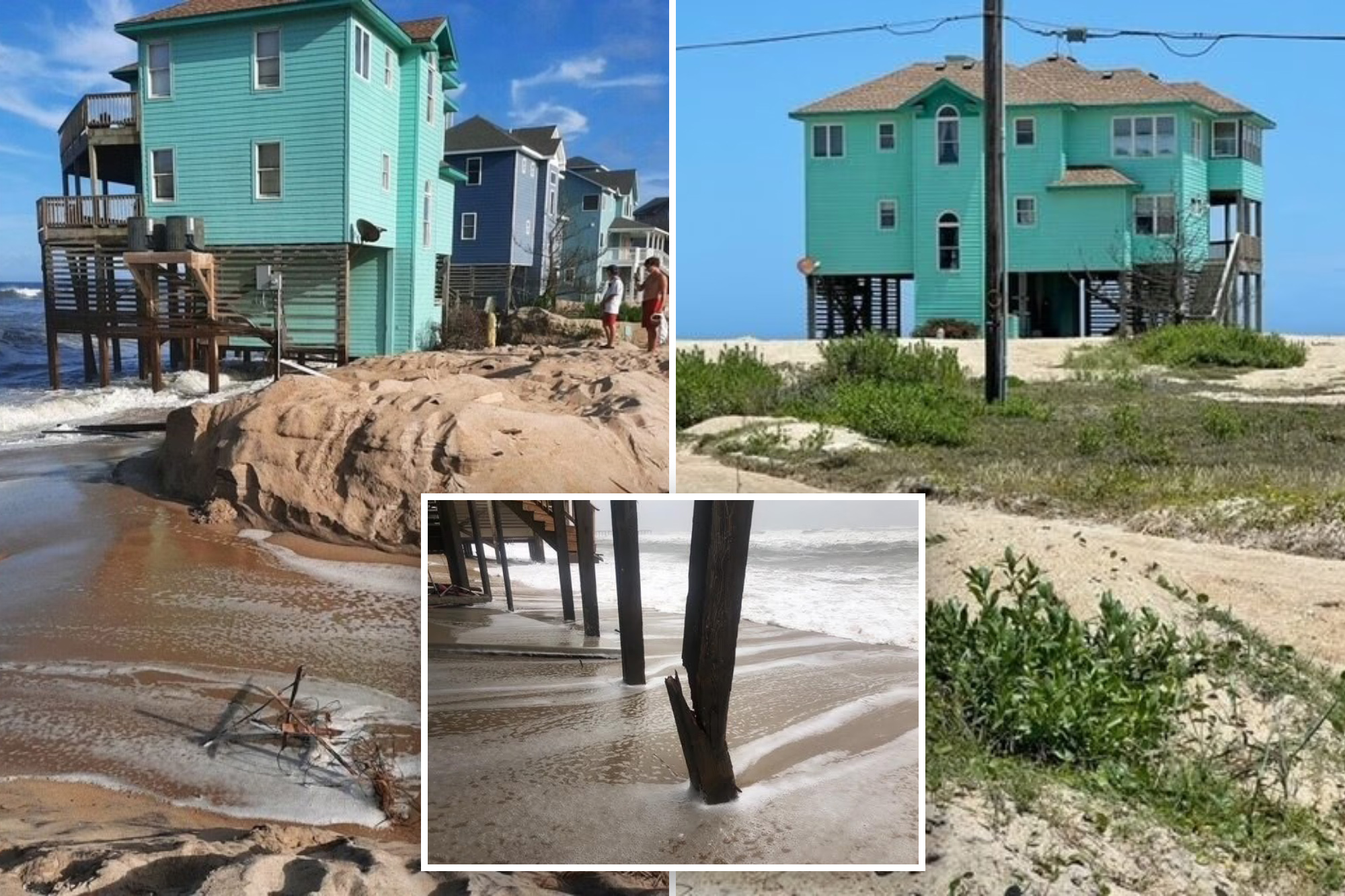I
n 2002, Dr. Scott Twentyman and Cindy Doughty bought a three‑story beach house in Rodanthe, North Carolina, without a second thought about the sea’s encroachment. “It wasn’t on our radar,” Twentyman told Realtor.com®. “We never even thought of it.” Yet the town’s shoreline has been retreating at roughly 13 feet a year, a fact that would eventually threaten the couple’s dream home.
The tipping point came in 2019 when a string of nor’easters, including Hurricane Dorian, battered the Outer Banks. Several neighboring houses were swallowed by the Atlantic, and one of their own pilings crashed through the back door, flooding the first floor with two feet of water. “It was crazy,” Doughty recalled. “We knew we had to act fast.” The couple realized that staying meant losing the house, while selling would likely bring a lowball offer because the property was uninhabitable.
They were fortunate to own a double lot, which made relocation possible. “Otherwise, there would have been no empty space to move it to,” Twentyman explained. “We couldn’t replace the view or the house itself.” The decision was to shift the entire structure 100 feet inland—a move that, while modest in distance, required a hefty investment of over $200,000, paid entirely out of pocket. Insurance companies typically refuse to cover proactive moves, insisting the house must first be lost to the ocean before they pay out. “It’s idiotic,” Twentyman said. To finance the relocation, the couple took a home‑equity loan on another property they owned.
For the actual move, they hired Expert House Movers, the same team that relocated the Cape Hatteras Lighthouse 2,900 feet in the late 1990s. The crew’s experience with a historic structure gave the Twentymans confidence that their home would be handled with care. The process began by removing the first floor—entryway, laundry, stairwell—to allow girders to be placed beneath the house on new pilings. With hurricane season in full swing, timing was critical. “We had to get it done before the next storm,” Doughty said.
Securing permits and completing the new foundation took several months of stressful work. Yet the actual physical move was surprisingly swift. “It only took about 20 minutes,” Doughty noted. They didn’t need to clear out the house; the movers could lift the structure intact. The night of the move was stormy, but a brief lull in the weather allowed the house to be transported safely. “The wind died down, the rain stopped, and it got really quiet,” Doughty recalled, still getting goosebumps when she thinks of it.
Once relocated, the pilings rested on bedrock rather than shifting sand, giving the couple greater peace of mind for future storms. “Knowing it’s on bedrock gives us more confidence, especially when bad weather strikes,” Twentyman said. The couple has no regrets about the move. “It was a big leap of faith, but it paid off,” Doughty said. They advise other coastal residents to consider a similar strategy: moving a home can preserve both property and emotional attachment. The experience also brought them closer together, as they faced the challenge side by side.














